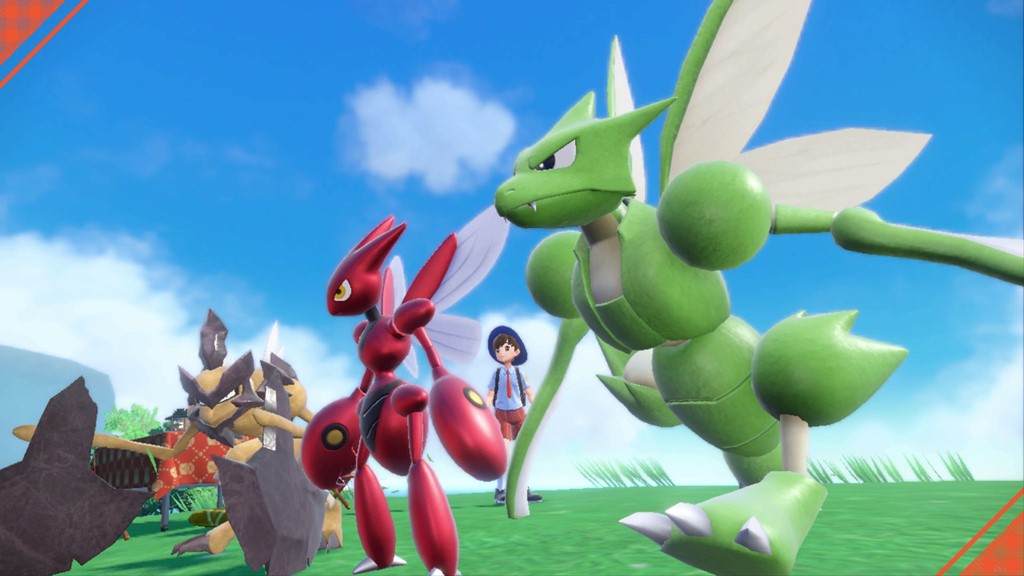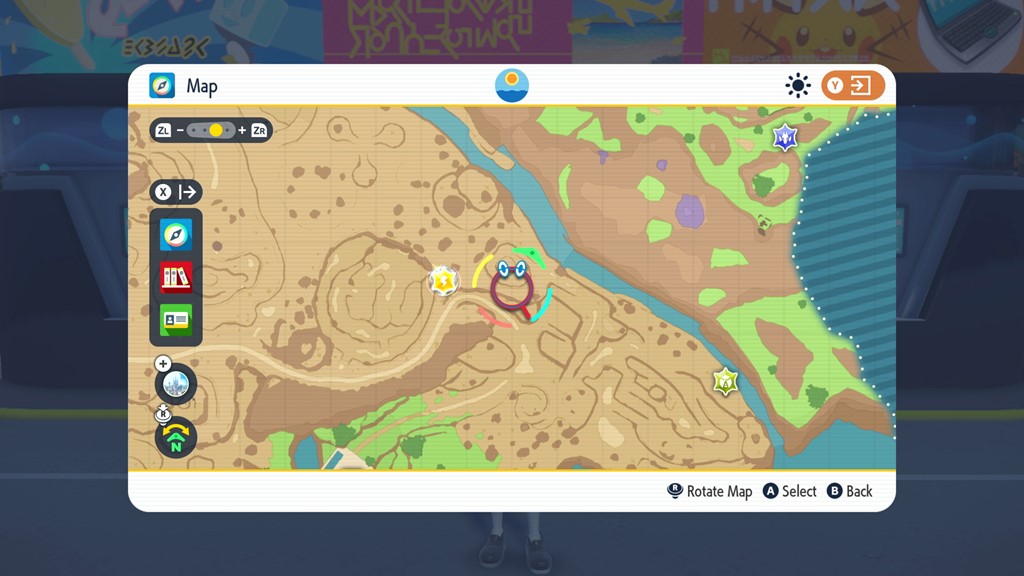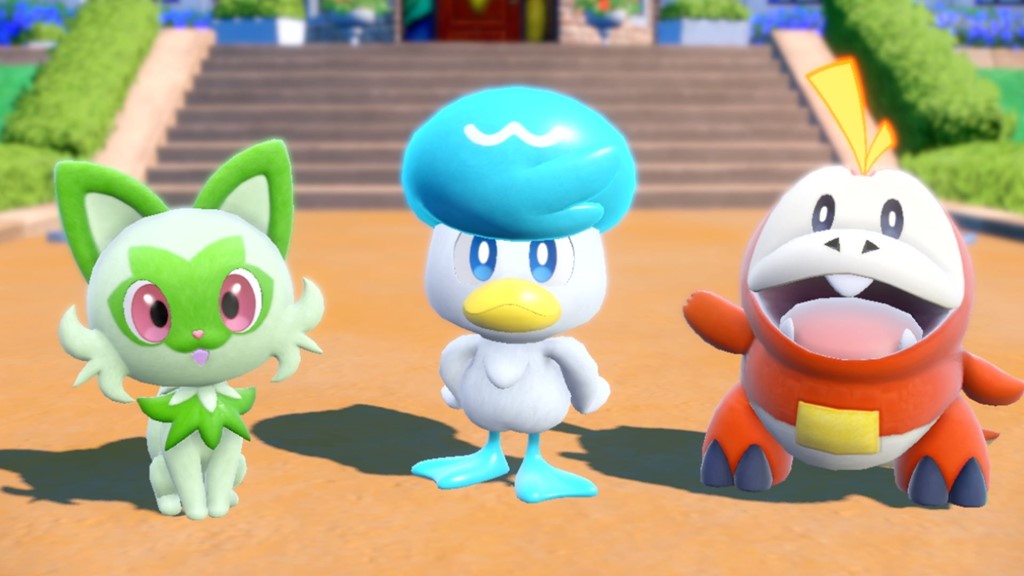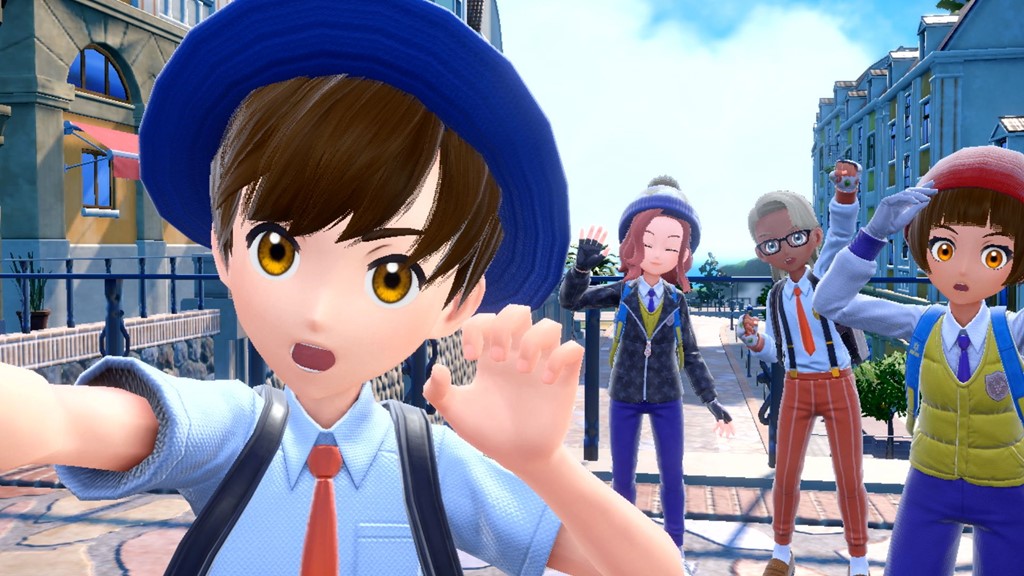REVIEW: Pokémon Scarlet and Violet Are Fun Adventures That Needed More Time
Pokémon is a title that’s always thrived on discovery. The best games in the series, even within their fairly formulaic nature, harness the thrill of exploration. Looking back on Pokémon Red and Blue from Pokémon Scarlet and Violet makes the original Game Boy titles appear absolutely archaic, but the throughline is there. The original games begged you to dig deeper, investigate every corner, check every alleyway and examine every area.
Rarely does the first entry in a long-running video game series nail its atmosphere so perfectly on the opening swing, but those games felt so much bigger than anything that a Game Boy could actually contain. Scarlet and Violet continue that tradition. To the children playing those classic Pokémon games for the first time they felt downright infinite, and as an adult playing these newest entries, I get a similar sense whenever I come to a pinnacle and am allowed to survey the land around me. What secrets does it hide? What will I find and what will I be able to do?
As Professor Oak tells you in Red and Blue, “A world of dreams and adventures with Pokémon awaits! Let’s go!”

Image Source: The Pokémon Press Site
The open world of Scarlet and Violet doesn’t click in immediately. The initial moments of the game consist of you leaving your house, walking to someone else’s house and up and down some paths, all filled with the requisite calls of “Hey! Over here!” of modern titles in the main series. But then, as soon as it releases the grip on your hand and tasks you with heading to Mesagoza (the hub city of the Paldea region and the place where you’ll be attending an Academy) it hits you all at once. Suddenly, you’re allowed to ditch the familiar trails and go sprinting into the fields, forests and hills.
RELATED: The Game Awards 2022 Nominees Include Elden Ring, Xenoblade Chronicles 3 and More
When the game decides to pull you in for an extended bit of static story-building such as the first time you visit the aforementioned school and essentially have every narrative thread dumped on you at once, letting you go free never really loses its sense of wonder. Even if you did pour countless hours into Pokémon Legends: Arceus (the game from earlier this year with open-world mechanics that seemed to serve as a test drive for Scarlet and Violet), that moment where the cutscene stops and you’re pushed back into the wilderness is incomparable within the franchise. It’s impossible to not get the feeling that this is what Pokémon has been building toward all these years, or at least the years since it’s been a fully 3D title.
It’s probably Scarlet and Violet’s strongest point.

Image Source: The Pokémon Press Site
In recent generations, Pokémon has shown a greater emphasis on concrete narrative. In Red and Blue, the journey was mostly your own — battle gym leaders, foil Team Rocket’s plans, become the Champion and maybe catch ‘em all if you had the patience. You filled in any cracks of personality and preference. This has evolved to what we see in Scarlet and Violet, which has three competing quest lines thrown at you, each with a story of its own. I won’t spoil how they end or how they tie together, but each one is a bit more specific than “walk into a gym and challenge the oddly dressed person in the back” or “go into a building and beat up everyone wearing black,” even if they stay true to the simple ethos of them. This more modern, stricter brand of Pokémon storyline doesn’t clash with the open world environment, though as a very old fan of Pokémon there are a few times when I felt myself wanting to rush through the dialogue boxes because I was so eager to get back to my journey, my way.
RELATED: Pokémon Reveals if Ash Ketchum Becomes the World Champion After 25 Years
There’s also some nice character work going on here. That’s not something you hear very often regarding Pokémon, where characters either seem to correlate with their anime personalities or remain blank templates for fans to shade in. Many in Scarlet and Violet serve as more than walking motivational posters — even Nemona, the excitable rival that craves constant battles, manages to find some depth. She’s probably the series’ best rival since the games of the Nintendo DS, and encountering her feels enthusiastic rather than blandly mandatory. These added details extend to the new Pokémon starter trio which follows the same “creatures with inherent character” design methodology as Pokémon Sword and Shield’s Fire-Water-Grass monsters. It’s toned down a bit there, though, and their quirks thankfully don’t override the player imbuing them with their own imagination.

Image Source: The Pokémon Press Site
Movement through Paldea lacks the kinetic momentum of Legends: Arceus, mostly thanks to the catching mechanic returning to the series’ roots rather than allowing you to just toss Pokéballs with abandon. That being said, it’s still fun, though it still isn’t Pokémon’s answer to The Legend of Zelda: Breath of the Wild, a game that made travel throughout its lands a process of constant invention. I don’t know if we’ll ever get that, to be honest. Considering how devoted the franchise is to ensuring ease of approachability for new and younger players, Scarlet and Violet might be as close as we get to that “wind in your hair” brand of odyssey.
Outside of the first bit’s dedication to tutorial, everything proceeds relatively swiftly. There are still a few moments of “Can’t go here until you’ve done this thing first.” For some reason, this is always treated as a Pokémon-specific fault when this is a mechanic that exists in many video games. Fortunately, Paldea is expansive enough to alleviate any worries that the best parts of the game are being painstakingly hidden from you.
RELATED: Which Pokémon Region Would You Begin Your Journey In?
At this point, I feel it’s important to tackle what has become, by far, the most infamous feature of the games since their release: the performance issues and graphical glitches that, considering who you ask, are either sparing hiccups or infections. My own playthrough luckily leans toward the former, with the worst offender so far being a camera that, when I’d leave a building in Mesagoza, would decide to suddenly leap up and into the side of a wall leaving me to frantically try to find my own character on the screen. It’s a drop in the bucket compared to the ocean of errors that others have shown me — and I mean “ocean” quite literally, having seen instances where the ground will fall away, leaving the bottom half of the screen as a blue abyss.
It reeks of a game that deserved a bit more time in the oven where even a few additional months of fine-tuning and testing would’ve likely caught some of these issues. It’s on a scale the Pokémon series has never experienced before, overshadowing any of the slowdowns that plagued titles like Pokémon Ultra Sun and Ultra Moon and falling into a different category than the “perform these very specific actions in a row and you might be able to break your own game” MissingNo. antics of Red and Blue. It thus raises the question: If the ultimate Pokémon game deals with such a laundry list of problems, what’s the next one going to look like?

Image Source: The Pokémon Press Site
Luckily, Scarlet and Violet doesn’t fill me with the urge to see what the franchise’s next phase will be. That’s something that has often occurred to me since the series reached one of its zenith points in Pokémon Black 2 and White 2 and returned with the fully 3D but emotionally emptier Pokémon X and Y. X and Y hinted at something much bigger, turning the “every Pokémon game is sort of a rough draft of the next game” into even more of a prime feature. After beating Sword and Shield, I immediately wondered where the series would go.
In Scarlet and Violet, I find a pleasing gameplay loop that allows me to just sort of hang out in Paldea. It’s an aspect that unites my preferred titles in the series. There’s a joy in being here, where each day it takes to complete the game and every day after doesn’t feel like a rushed marathon to the credits and the sequel, but rather another chance for a cool experience in a world I really like. This is also a boon for team-making. There are a lot of really cool monsters in Scarlet and Violet, and creating my own personal herd is an amusing journey rather than one based on balanced necessity and sifting through dozens of creatures that I don’t really like.
RELATED: The Pokémon Anime Is Still Important To The Franchise 25 Years Later
To call Pokémon Scarlet and Violet the “future” of the series feels a little shortsighted. I don’t want another title to go through the technical backlash that this one has faced, nor do I think that the series backtracking from some of the things that made Legends: Arceus so enjoyable means that we’re on any sort of straight line to Scarlet and Violet’s successors. If anything, it’s a blend of Pokémon’s past, present and future, a title that simultaneously makes a grand leap into a new generation while also holding dear to many of its traditionally classic and burgeoning elements.
In short, it’s pure Pokémon.

Daniel Dockery is a Senior Staff Writer for Crunchyroll. Follow him on Twitter! His book, Monster Kids: How Pokemon Taught A Generation To Catch Them All, is available wherever books are sold.
from Latest in Anime News by Crunchyroll! https://ift.tt/ZQpDJtn

Comments
Post a Comment